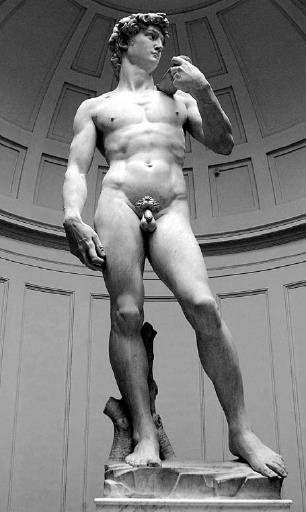Most historians and critics agree that it was Raphael Sanzio (1483–1520) who most clearly stated the ideals of the High Renaissance. Though arch rivals Leonardo da Vinci (1452–1519) and Michelangelo Buonarroti (1475–1564) influenced the younger Raphael, he developed his own style. A prolific painter, he was also a great technician whose work is characterized by a seemingly effortless grace. His most well-known work is The School of Athens (1509–11), which has been called “a complete statement of the High Renaissance in its artistic form and spiritual meaning.” The painting, which projects a stagelike space onto a two-dimensional surface, reconvenes the great minds of the ancient world—Plato, Aristotle, Pythagoras, Herakleitos, Diogenes, Euclid—for an exchange of ideas. Raphael even included himself in this gathering of greatness. But it seems only appropriate for the master to be in such company: In this work, Raphael has achieved the art of perspective, bringing the discipline of mathematics to pictorial space where human figures appear to move naturally.

Michelangelo’s statue of David is housed at the dome of Florence’s Accademia Gallery, Italy.

